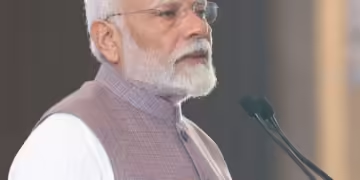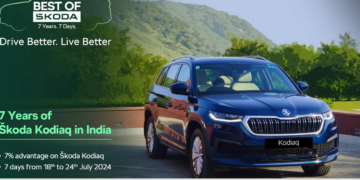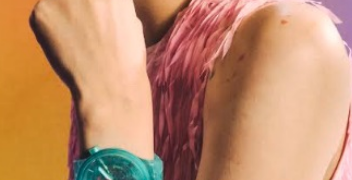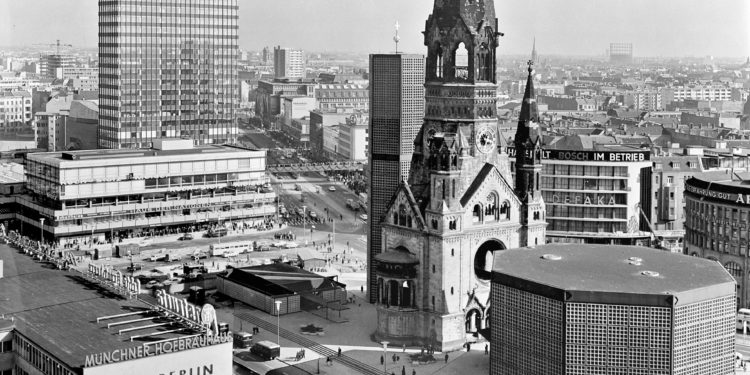One hundred and ten years ago, Daimler-Motoren-Gesellschaft (DMG) and Benz & Cie. laid the foundations for one of the most valuable trademarks in the world. On 24 June 1909, DMG registered the three-pronged Mercedes star as a trademark with the German Imperial Patent Office. The “Benz” lettering enveloped by a laurel wreath followed on 6 August 1909 by what was then a competitor. In 1925, as part of the cooperation and the merger of the two companies, this turned into the signet used by Mercedes-Benz to this day – a graphical masterpiece and, at the same time, a synonym for innovation and luxury. Just how ubiquitous the sign of the brand is is shown at the Mercedes-Benz Museum with, amongst other things, a display cabinet in the Collection 4 “Gallery of Celebrities” room.
Stuttgart. The three-pronged star in a circle: people all over the world immediately recognise this signet – regardless of what language they speak and what alphabet they use for writing. For the logo of Mercedes-Benz is an international expression of luxury and innovation. It stands for the future with heritage thanks to the oldest car manufacturer in the world – and it is one of the most valuable trademarks in the world.
The immense charisma is also made clear by the Interbrand international brand report: in it, Mercedes-Benz is the only German brand in 2018 to make the top 10 “Best Global Brands 2018”. This strong position has a sustainable basis because of its variety. A good example of this is that Mercedes-Benz is the most successful brand of all the Top 100 Interbrand brands on Instagram, with more than one billion likes.
The history of today’s Mercedes-Benz trademark began in the summer of 1909 in Untertürkheim and Mannheim, Germany. This is because, independently of one another, the predecessor companies of Daimler AG registered their trademarks at the German Imperial Patent Office 110 years ago: on 24 June 1909, Daimler-Motoren-Gesellschaft (the valuable name of the company founder had already been protected in 1899 as a trademark) registered the utility model protection for its three-pronged Mercedes star. It was entered into the trademark register on 9 February 1911. A version of the trademark with the “Mercedes” lettering and four small stars was protected in 1916.
Paul and Adolf Daimler, the sons of the automotive pioneer Gottlieb Daimler who had died in 1900, had the idea for the symbol. They adapted a star for it, with which their father had marked the family home on a postcard during his time as technical director of the Deutz gas engine factory. The new trademark, with its three rays, also symbolised the vision of Gottlieb Daimler, who used Daimler engines in land vehicles, in ships and in aviation.
On 6 August 1909, Benz & Cie. had the “Benz” lettering enveloped in a laurel wreath protected. This symbol was registered in the trademark registry on 10 October 1910. The logos were also immediately used as trademarks on the products and in the communication of both car manufacturers – from advertising to stationery.
Evolution of the trademarks
On the way to the trademarks registered in 1909, both brands tried out various versions. For example, as the new Mercedes brand name for the Daimler cars prevailed after the successful 1901 Nice Race Week, the arched “Mercedes” lettering could be found on the radiators of DMG passenger vehicles. Benz & Cie. also sometimes advertised with “Original Benz” in a black ring gear – this impression conveyed the technical expertise of the company.
The fact that the Benz ring gear was later replaced by the laurel wreath was probably down to important motorsport victories. Amongst other things, the brand from Mannheim won the 1907 Herkomer-Konkurrenz and the first Prinz-Heinrich-Fahrt as well as the St. Petersburg-Moscow race in 1908. Benz also finished in second and third place at the 1908 French Grand Prix and attained two world records in Brooklands in 1909. The successes are part of the unique history of “125 years of motorsport for Mercedes-Benz”. The brand from Stuttgart is celebrating this anniversary in 2019.
A new star rises
Today’s trademark of a three-pronged star in a laurel wreath was created in 1925, just in time for the merger of the two companies into Daimler-Benz AG in the summer of 1926. At the same time, the Mercedes-Benz car brand was born. In particular, the abstract design of the trademark as a three-pronged, vivid star in a circle is known the world over today. The combination of the free-standing, vividly designed star in a circle with a badge of the trademark attached below it became standard for the vehicles of the Mercedes-Benz brand in 1926.
The Mercedes star, however, did not protrude into the airflow everywhere as a radiator mascot: on the racing cars of the 1930s, the trademark was applied flat to the panel of the aerodynamic front end. The SL sports cars of the 1950s also established a large, central star on the radiator as the new face for sporty passenger vehicles. The Mercedes-Benz 300 SL (W 194) racing sports car introduced in 1952 was the first to exhibit the new appearance.
For example, the powerful vehicles of Mercedes-AMG interpret this design in its latest form. Products such as the Mercedes-Benz EQC 400 4MATIC (combined electrical consumption: 20.8 – 19.7 kWh/100 km; combined CO2 emissions: 0 g/km*) from 2019 carry it into the future with refined modernity. And, of course, the commercial vehicles also bear the Mercedes star – centrally in the radiator grille since the 1950s.
Stars over the city
The Mercedes-Benz trademark also characterises the appearance of the company in public spaces. Installations on the roofs of striking buildings that can be illuminated at night are particularly impressive. For example, in Germany from 30 March 1965, a ten-metre-tall Mercedes star rotated on the roof of the Europa-Center on Kurfürstendamm in Berlin. The 15-tonne trademark was the largest rotating and hydraulically tilting neon sign in the world at the time. In Hollywood, too, the Mercedes star has been prominently used since this period – just as it has everywhere in outstanding cities all over the world. Cars, architecture and social media make it clear: the charisma of this famous trademark is unbroken.
In the Mercedes-Benz museum:
Collection 4 “Gallery of Celebrities” room
Display cabinet with the Mercedes star on countless objects from a radiator mascot to an advertising sign.
* Electrical consumption and range was determined on the basis of Regulation 692/2008/EC. Electrical consumption and range are dependent upon the vehicle configuration.










































